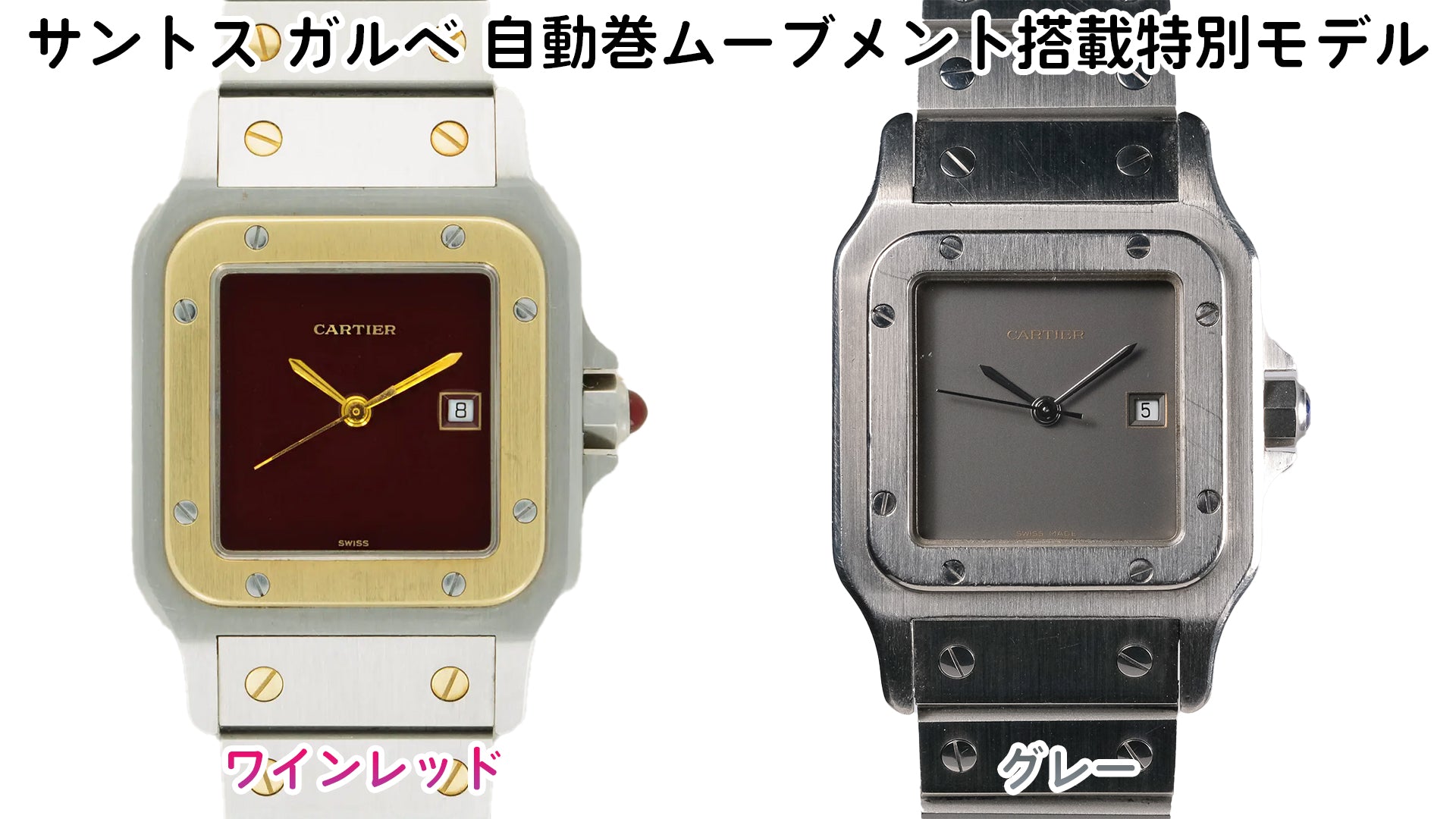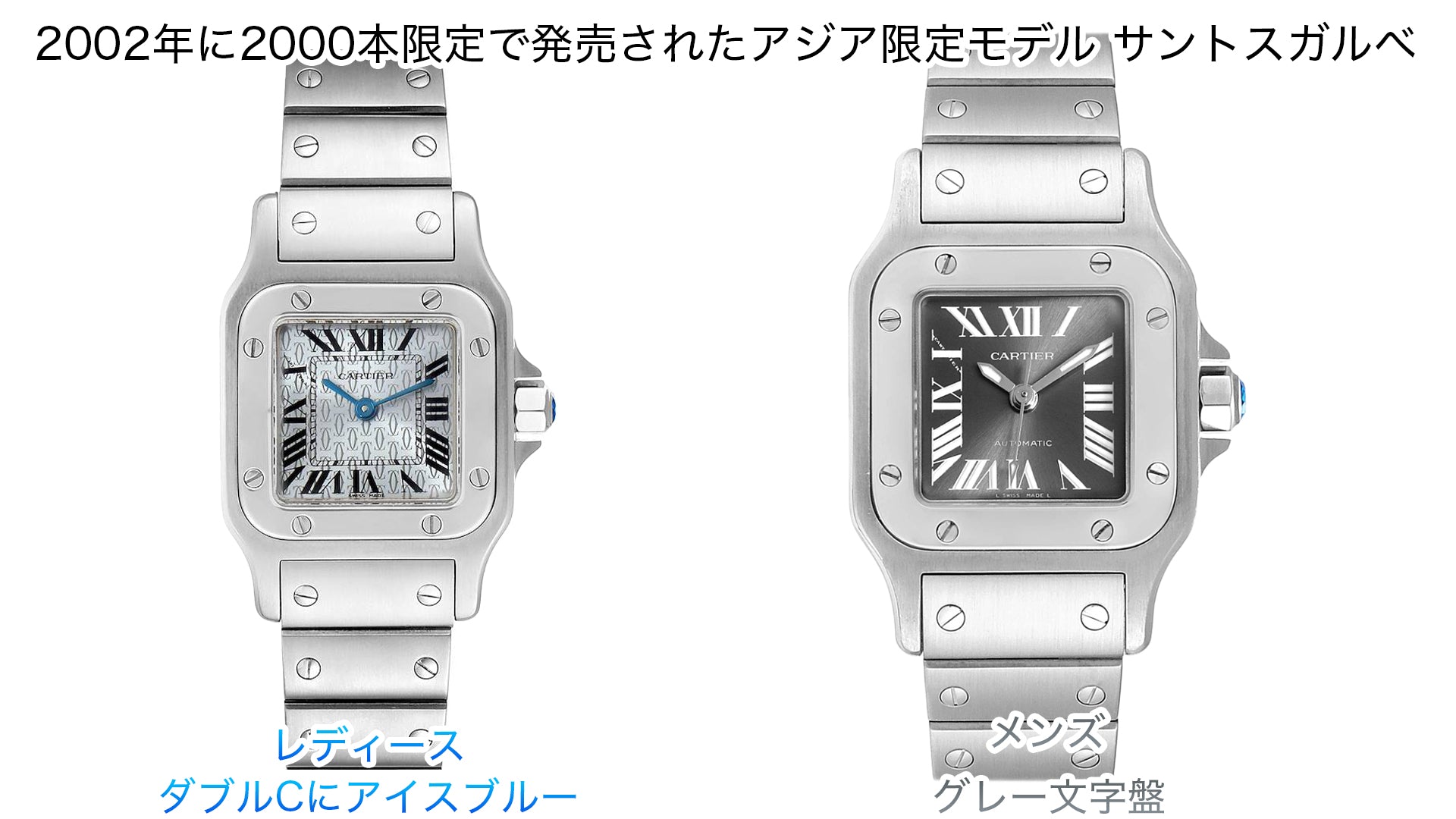What kind of watch is Cartier's discontinued watch, the Santos Galbee?
The most famous Cartier watch is probably the Tank, but the next most popular model for men is the Santos.
The Santos is the first wristwatch created in Cartier's history, and is a fascinating model in terms of both history and design.
Here, we will focus on the Santos Galve, a discontinued model of the Santos.
What kind of model is the Santos Galve?

In the 1970s, the time had come when there was not only the wealthy but also a new middle class, and the key to business success was to attract and retain not only a small portion of the wealthy but the majority of the middle class as customers.
At that time, the watch world was in the early stages of a boom in large, thick watches, such as Audemars Piguet's Royal Oak and Patek Philippe's Nautilus.
What these watches had in common was that they were large in size and made of stainless steel, despite being luxury brands, and they catered to the tastes and lifestyles of the newly emerging young generation.
These watches were later renamed It came to be known as the "luxury sports watch."
However, at the time, Cartier did not have a model that could fill this gap, so they needed to create a new model.
In 1978, Alain-Dominique Perrin, who had been appointed marketing manager at Cartier at the time, came up with the idea of creating an affordable sports watch based on the legendary Santos-Dumont.

Alain-Dominique Perrin, CEO of Cartier from 1975 to 1998, had the idea to introduce an affordable Santos in steel with gold accents in 1978. (Image: theconnectedtable.com)
Cartier Santos reborn through a fusion of materials
Perrin's idea was to build on the success of the Royal Oak and Nautilus and create a wristwatch out of stainless steel, a material that Cartier had never used in a watch before.
However, to give this new watch a sense of luxury, Perrin decided to present the Santos in stainless steel with gold accents and crown guards.
At the time, the combination of stainless steel and gold was not common, so it was a challenging attempt and a bold combination.
Cartier was one of the companies that led the way in this new trend, taking inspiration from others while also using its own strengths.
A little-known fact is that the Santos started out as a two-tone watch.
Looking at the design, the bezel frame and the bracelet screws are made of gold, and although they are two different colored metals, they blend together well, giving the watch a sporty yet luxurious feel.
It's hard to find a watch from another company that suits two-tone design as well as the Santos.

The two-tone Santos, introduced by Cartier in 1978 under the direction of Alain-Dominique Perrin. (© George Cramer)
It was against this background that the new Santos was unveiled on October 20, 1978.
As a result, this combination of stainless steel and gold was highly sought after by many customers and was a huge success.
Shortly thereafter, an all-stainless steel model was released, which was also a huge hit, significantly increasing the popularity of the Santos.
1987 Birth of Santos Galve
What is generally believed is that Santos Garcia was newly established in 1987.
That is true, but in fact it is an extension of Santos, which was born in 1978.
In fact, Santos was founded in 1978, but changed its name and was relaunched as Santos Galve in 1987.
While the design is largely the same, it has been improved from previous Santos models, with the case in particular being more curved and smoother than the original Santos, making it fit the wrist better.
The smoothly curved case earned the name "Galve" which means "curve" in French.

On the left is the Cartier Santos Galbee, and on the right is the two-tone Santos from 1978. (© George Cramer)
This newly revamped Santos Galbee is available in two models, one with a quartz caliber and one with an automatic caliber.
Now let's look at the actual watch:

As you can see from the images, there is almost no difference between the quartz model and the automatic model, so it may be difficult for those who are not knowledgeable to tell the difference, but an easy way to tell them apart is the location of the date display.
The quartz model has a date display at the 6 o'clock position, while the automatic model has the date display at the 3 o'clock position, so it's easy to tell the difference by looking at these.
The automatic movement is Cal. 077 (ETA 2671) , which is equipped with an ébauchemaker movement that is still in production today.
This was heavily influenced by the historical context of the watch industry at the time.
The development of the quartz movement by the Japanese company Seiko in the early 1970s made the traditional method of assembling individual parts to power a watch, either manual or automatic, obsolete.
However, in the late 1980s, mechanical movements began to regain popularity again, due to the preference of men for hand-wound and automatic watches, as well as for craftsmen who liked mechanics.
As a result, Swiss watch companies, including Cartier, believed that relying solely on quartz would diminish the value of their brands, and so they gradually began to revive automatic and hand-winding watches.
The Santos Galbe, which is equipped with an automatic caliber, comes in an LM size to meet men's tastes.
The Santos Galbe was such a big hit that it was developed into a variety of different dial variations.
Let's take a look at each model:

From the left we have Roman indexes, blue indexes, a gold and stainless steel combination with guilloche engraving, and all stainless steel with guilloche engraving.
These models are produced in smaller numbers than the regular models.
Even rarer is this Galbe, which was also produced in limited quantities with dials in special colors.

The dial on the left is wine red and the dial on the right is gray.
The crown of the wine red dial is set with a ruby, giving it a special feel.
The following model was released in 1990:

The Galbee released at this time is characterized by the fact that all of the dials use applied indexes, which are raised indexes, giving the dial a three-dimensional look and depth.
In 2002, another limited edition model was released, this time limited to 2000 pieces.
In 2002, an Asia-limited edition was produced, with 2,000 men's models with a gray dial and 2,000 women's models with an ice blue dial and double C logo.
The gray dial is a color that men love, and it has a chic and calm feel, yet is sporty and casual, giving it a beauty that other brands cannot achieve.
These models are sold at higher prices than regular Galvees due to the low production numbers.
summary
The reason why Santos Galbe has been so popular for so long is due to its design.
This is because the model was created to take advantage of the boom in luxury sports watches that began in the 1970s, and so it will easily fit in with any style, even for those of us living in the modern age.
For these reasons, the price of Santos Galbe continues to rise year by year, and the amount you pay to purchase it is also increasing.
This is one watch that anyone who has been interested in the Santos Galbe should definitely get their hands on as soon as possible.





